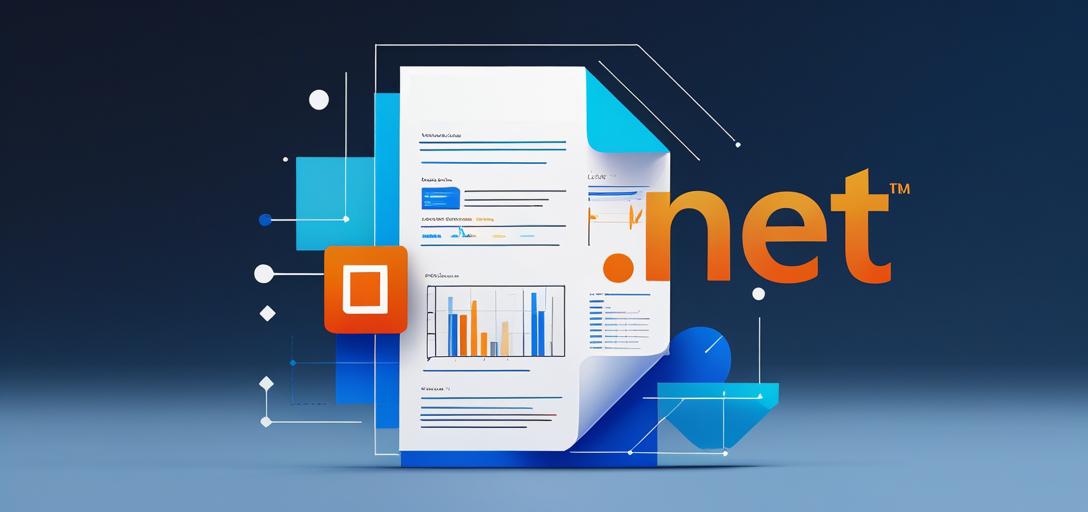Master Rendering MS Project Documents Using GroupDocs.Viewer .NET
Introduction
When managing large-scale projects, rendering Microsoft Project (MS Project) documents effectively is crucial. Visualizing project timelines and tasks in a web-friendly format allows stakeholders to easily access and understand project details. This tutorial will guide you through using GroupDocs.Viewer for .NET to render MS Project documents with an adjustable time unit, enhancing your project management capabilities.

What You’ll Learn:
- How to set up GroupDocs.Viewer for .NET
- Rendering MS Project documents as HTML with embedded resources
- Adjusting the time unit for project management options
Let’s start by looking at what prerequisites are needed before diving into the implementation.
Prerequisites
Before we begin, ensure you have the following:
Required Libraries and Versions:
- GroupDocs.Viewer for .NET version 25.3.0 or later
- A development environment that supports .NET (e.g., Visual Studio)
Environment Setup Requirements:
- Ensure your project targets a compatible .NET Framework version.
Knowledge Prerequisites:
- Basic understanding of C# and .NET
- Familiarity with MS Project file structure
With these prerequisites in mind, let’s move on to setting up GroupDocs.Viewer for .NET.
Setting Up GroupDocs.Viewer for .NET
To get started, you need to install the necessary package. Here’s how:
NuGet Package Manager Console
Install-Package GroupDocs.Viewer -Version 25.3.0
.NET CLI
dotnet add package GroupDocs.Viewer --version 25.3.0
License Acquisition Steps:
- Free Trial: Download a trial version from the GroupDocs website.
- Temporary License: Apply for a temporary license via this link to explore full features.
- Purchase: For continued use, purchase a license at GroupDocs Purchase Page.
Basic Initialization and Setup:
Here’s how you can initialize GroupDocs.Viewer in your C# application:
using GroupDocs.Viewer;
// Initialize the Viewer object with an MS Project document path.
using (Viewer viewer = new Viewer("path_to_your_mpp_file.mpp"))
{
// Your rendering code will go here.
}
With GroupDocs.Viewer set up, let’s delve into implementing this feature.
Implementation Guide
Rendering MS Project Documents as HTML with Embedded Resources
This section focuses on converting MS Project documents to an easily accessible web format using HTML. We’ll also adjust the time unit for project management options to improve clarity and usability.
Overview
Rendering your projects allows stakeholders to view details online, enhancing accessibility and collaboration.
Step 1: Configure Output Directory
Firstly, set up where you want the rendered files saved:
string outputDirectory = Path.Combine("YOUR_OUTPUT_DIRECTORY");
string pageFilePathFormat = Path.Combine(outputDirectory, "page_{0}.html");
Here, outputDirectory is your designated folder for saving HTML files.
Step 2: Initialize and Configure Viewer
Now, initialize the Viewer object with your MS Project file:
using (Viewer viewer = new Viewer("YOUR_DOCUMENT_DIRECTORY\\path_to_mpp_file.mpp"))
{
// Configure view options to render as embedded resources.
HtmlViewOptions options = HtmlViewOptions.ForEmbeddedResources(pageFilePathFormat);
}
HtmlViewOptions is configured for rendering with embedded resources, ensuring all necessary files are packaged together.
Step 3: Adjust Time Unit
To enhance project management visualization, adjust the time unit:
options.ProjectManagementOptions.TimeUnit = TimeUnit.Days;
Setting TimeUnit to Days provides a clear daily overview of your project timeline.
Step 4: Render Document
Finally, render the document using configured options:
viewer.View(options);
This step executes rendering based on specified configurations.
Troubleshooting Tip: If you encounter file path errors, ensure all paths are correctly defined relative to your project’s root directory.
Practical Applications
Here are some real-world use cases for rendering MS Project documents:
- Project Timeline Sharing: Easily share project timelines with remote teams via a web link.
- Stakeholder Updates: Provide stakeholders with up-to-date project status reports in an accessible format.
- Integration with Project Management Tools: Integrate rendered HTML files into existing .NET systems for automated report generation.
Performance Considerations
Optimizing performance while using GroupDocs.Viewer is crucial:
- Resource Usage Guidelines: Monitor memory usage during rendering, especially with large documents.
- Best Practices:
- Dispose of Viewer objects properly to free up resources.
- Cache rendered outputs if they do not change frequently.
Conclusion
In this tutorial, we explored how to render MS Project documents using GroupDocs.Viewer for .NET and adjust time units for project management. By following these steps, you can enhance your project documentation accessibility and collaboration capabilities.
Next steps could include exploring additional rendering formats or integrating with other tools in the .NET ecosystem.
FAQ Section
- What is GroupDocs.Viewer?
- It’s a versatile library that allows viewing of various document types programmatically in .NET applications.
- How do I change time units to weeks?
- Use
options.ProjectManagementOptions.TimeUnit = TimeUnit.Weeks;to adjust the unit from days to weeks.
- Use
- Can GroupDocs.Viewer handle large MS Project files?
- Yes, but consider optimizing performance by monitoring resources and caching outputs where possible.
- Is a license required for production use?
- A full license is necessary for production deployment; you can apply for a temporary one for evaluation purposes.
- Where can I find more information on GroupDocs.Viewer?
- Visit the official documentation for detailed guides and API references.
Resources
- Documentation: Explore comprehensive guides at GroupDocs Documentation.
- API Reference: Detailed API usage can be found on GroupDocs API Reference.
- Download: Get the latest version from GroupDocs Releases.
- Purchase and Trial: Visit GroupDocs Purchase Page for purchasing options or download a trial.
- Support: For assistance, join the discussion on the GroupDocs Forum.